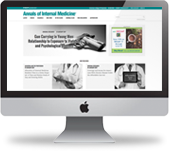How much alcohol is too much?
A growing recognition of alcohol as a health risk coupled with the rise of abstinence-friendly social trends provides an opportunity for primary care physicians to have more comprehensive conversations with their patients about drinking behaviors.
Is any amount of alcohol safe to consume? That's the question primary care physicians are grappling with how to best answer following this year's Surgeon General report concluding that any alcohol consumption increases the risk of seven different types of cancer.
For Elizabeth Salisbury-Afshar, MD, MPH, an addiction medicine physician at UW Health in Madison, Wisc., “From a health perspective, the safest option is not to drink at all.”

Other experts agreed. “From a clinician perspective, I think adopting more of the mindset that any amount might be unhealthy probably makes more sense,” said Alex H. Krist, MD, MPH, a professor of family medicine and population health at Virginia Commonwealth University in Richmond.
With the causal link between alcohol and health risks more evident than ever, primary care clinicians may struggle to navigate the unsafe drinking threshold with patients. But several practices, like motivational interviewing and building trust, can help guide these conversations and empower patients to make healthier choices, experts said.
Defining drinking patterns
The current Dietary Guidelines for Americans, published prior to the Surgeon General's report, recommend that alcohol consumption should be limited to two drinks or fewer per day for men and one drink or less per day for women. The guidelines are updated every five years, with the latest iteration covering 2020 to 2025. The 2025 to 2030 guidance is currently being developed.
Anything over the dietary guideline limits can be considered unhealthy, experts said, although a plethora of terms exist for different drinking patterns. The National Institute on Alcohol Abuse and Alcoholism offers definitions ranging from drinking in moderation to alcohol use disorder.
The overall rule of thumb is that drinking within recommended limits is going to be safer and that the more you drink, the higher the health risk, said Dr. Salisbury-Afshar.
Both spacing drinks out during the week and drinking multiple drinks each day of the weekend have their own set of associated risks, whether long-term chronic effects or harms of acute intoxication, she continued.
Drinking above the dietary guideline recommendations is considered at-risk drinking. “The term ‘unhealthy alcohol use’ spans alcohol consumption patterns from at-risk drinking to meeting criteria for alcohol use disorder. Alcohol use disorder is then further characterized into mild, moderate, and severe categories based on the number of DSM-5 criteria an individual meets,” explained Jeanette Tetrault, MD, FACP, professor of medicine and epidemiology at Yale University School of Medicine in New Haven, Conn.
The multitude of disparate drinking patterns along with the causal associations outlined in the Surgeon General's report underscore the importance of patient education about alcohol consumption.
Specifically, the report found that consuming alcohol raises the risk of developing cancers of the mouth, throat, esophagus, voice box, colon and rectum, and (in women) breast, each with a dose-response relationship.
“In the past, some patients may have believed that moderate red wine consumption was beneficial for health,” Dr. Salisbury-Afshar said. “But our current understanding of the literature suggests that this was likely inaccurate. While red wine was commonly consumed as part of the Mediterranean diet, and some early studies suggested health benefits, more recent evidence highlights a range of health risks associated with alcohol use.”
One main takeaway from the report for her was “just the really clear association with increased risk of breast and certain GI cancers, especially as breast cancer rates are going up nationally.”
However, knowledge of that association may be lost on patients.
When surveyed in 2022, just 40.6% of Americans said they were aware alcohol increases cancer risk, while one-fifth said they were unsure about the association, research published by JAMA Oncology in May shows.
A major role of primary care physicians is making sure patients have information that's useful and relevant to them as it relates to their own drinking patterns, Dr. Salisbury-Afshar said. Offering information earlier can also help catch patients before they engage in at-risk drinking behaviors.
“Our responsibility is to ensure that patients are informed about how their alcohol consumption may be linked to their symptoms (e.g., sleep difficulty), health conditions (e.g., obesity, diabetes, depression), and related concerns (e.g., relationship strain) that they may not otherwise recognize and provide appropriate counseling and treatments,” added ACP Member E. Jennifer Edelman, MD, MHS, professor of medicine and public health at Yale University School of Medicine, who coauthored an In the Clinic article on alcohol use published in the October 2022 Annals of Internal Medicine.
Screening, intervening
Universal screening is the first step to identifying unhealthy alcohol use patterns. Groups at particular risk for alcohol use disorder include people with high rates of adverse childhood experiences or trauma and those with a family history of the condition.
Both the Single Alcohol Screening Question (SASQ) and the Alcohol Use Disorders Identification Test–Consumption (AUDIT-C) are good screening options, said Dr. Krist, but his work shows limited uptake of these tools.
He coauthored a study assessing screening habits in 76 primary care practices published by JAMA Health Forum in August 2024, which found that while clinicians documented alcohol use by 75.7% of their patients, they used a validated screening instrument for only 2.1%.
“Clinicians, at their baseline, they weren't very good about appropriately screening for unhealthy alcohol use. They didn't tend to use the right screening instruments. ... They just ask open-ended questions like ‘You don't drink too much, right?’” Dr. Krist said.
Once a patient screens positive, they should then be evaluated further, including filling out a symptom checklist, so physicians can determine whether the patient is at risk for complications including withdrawal or alcohol use disorder, said Dr. Tetrault. (Dr. Krist coauthored an article published April 30 by the New England Journal of Medicine that includes an example of a symptom checklist.)
Interventions can include prescriptions for medication, referrals to therapists for cognitive behavioral therapy, or more specialized treatment or referrals to mutual aid programs like Alcoholics Anonymous. “What is most important for primary care physicians to know is that there are really good evidence-based medications that work, and you don't need special training to prescribe these medications in primary care,” Dr. Tetrault said.
Throughout the whole process, physicians ought to use patient-centered language, avoid stigma, and work to create a judgment-free atmosphere, experts stressed.
This involves framing the conversation based on each individual and creating personalized recommendations for cutting down on drinking.
“If our blanket recommendation is just ‘no alcohol intake,’ patients may be concerned and fearful of talking to us about drinking,” said Dr. Tetrault.
Rebecca A. Andrews, MS, MD, MACP, professor of medicine at the University of Connecticut in Farmington and Chair of ACP's Board of Regents, recommends asking patients if they've thought about less-than-healthy behaviors in their life that they might want to work on, then pausing to give them time to reflect.
If patients decide to make a change, it may not be immediate, and physicians should routinely check in to see how they're doing.
“The primary care physician-patient relationship is the patient-physician relationship that has the greatest power to increase longevity, and the reason is because there is trust and a long-term relationship, and so we should be leveraging that to create this safe space to talk about [drinking] and improved health behaviors,” said Dr. Andrews.
Dr. Krist compared the process to discussions on tobacco cessation.
“We've got good data that it takes five, six, seven attempts for someone to quit smoking, and it also takes multiple times of talking with people about their health behaviors to get them to a point where they might want to change,” he said.
Do's and don'ts
It can be hard for physicians to substitute medical language for nonpejorative terms, but making that switch is crucial, said Dr. Krist.
Physicians should avoid terms like “alcohol abuse,” “alcoholic,” “problematic drinking,” and “cirrhotic,” or any terms “where you're suggesting that the individual is defined by their medical conditions,” said Dr. Tetrault.
Instead, think of alcohol intake as a modifiable health behavior and use more neutral terminology like “drinking above recommended limits,” experts recommended.
Grounding discussions in epidemiology can also help patients feel more comfortable, encourage future visits, and enable honest conversations about progress. “This is not an uncommon thing that we encounter in primary care and uncover with screening,” said Dr. Tetrault.
Physicians can even ask patients if they're OK with hearing information about unhealthy drinking or if they're ready to make a change.
All of these practices pave the way for effective motivational interviewing, and understanding why patients drink above recommended levels in the first place is a good place to start.
“Alcohol is so socially acceptable in our culture, at least in most parts of the U.S., that having a conversation with people who have maybe been drinking above [recommended limits] their entire lives about why they use alcohol … is something that not all clinicians have front of mind,” said Dr. Salisbury-Afshar.
Asking patients why they drink might also get to the root of other problems, like depression, anxiety, intimate partner violence, or a looming divorce, said Dr. Andrews.
Data support the use of motivational interviewing in general medical settings for patients who have at-risk drinking levels but don't necessarily meet alcohol use disorder criteria, Dr. Tetrault added. The technique “enhances their own motivation for change [and] can be really effective in moving a patient from risky alcohol intake to drinking below those at-risk levels or maybe even to no alcohol intake at all.”
That's because it identifies goals that are important to the patient and tailors interventions to best fit their lifestyle, she explained. These goals can range from improving mood to boosting energy or productivity or developing better sleep habits. “Understanding what matters to people and then trying to relate their behaviors back to what matters to them” is an important clinical skill, said Dr. Krist.
If a patient is struggling with anxiety and insomnia, for example, “we know that alcohol really disrupts sleeping patterns. We also know that over time, alcohol actually makes anxiety symptoms worse,” explained Dr. Salisbury-Afshar.
Getting a sense of what role alcohol plays in patients' lives is also key, as simply recommending stopping drinking altogether “might not be a feasible goal for a lot of people,” Dr. Salisbury-Afshar added. These blanket statements may cause patients to shut down, making them less likely to disclose future use or underreport drinking patterns.
Changing social norms
Anecdotal and empirical evidence suggests that the rise of the mocktail, fewer work-sanctioned happy hours, and a sober-curious generation have all contributed to a loosening of alcohol's once-iron grip on American social life. According to experts, these trends also hold potential for improving alcohol-related health harms and normalizing abstinence.
Including mocktails on menus helps people substitute an unhealthy habit for a healthy habit, without sacrificing the joy of the experience, said Dr. Krist.
Dr. Andrews sees the fad as an opportunity “to move people into a different type of social drinking.” She conceded, however, that any experimentation with abstinence can be difficult “when you're in a culture where it is more the norm to have an alcoholic drink.”
To encourage patients, physicians should feel comfortable “sharing stories, without sharing identifying details, of course, about benefits experienced with abstinence to help normalize it,” Dr. Edelman said.
Physicians can also familiarize themselves with opportunities available in their community, like sober bowling nights, and share them with patients who are interested. If patients are nervous to tell their friends or family about their decision to stop or decrease drinking, physicians can even walk them through a trial conversation to practice what they're going to say, Dr. Andrews suggested.
Although these are steps in the right direction, more public health and structural approaches are needed to make healthy habits easy to maintain, said Dr. Krist. These might include adding additional warning labels to alcohol packaging or displaying information about serving sizes and ingredients.
He once again compared the situation to tobacco.
“I look at where we're at on the trajectory of addressing alcohol. It's similar to where we were with smoking and tobacco, like in the 1990s maybe 2000s,” he said. “So I think we've got a ways to go, but I think there's a whole knowledge and experience base around smoking that we can build on for alcohol.”
Dr. Salisbury-Afshar drew a similar conclusion. “I don't know primary care clinicians who don't feel comfortable talking about smoking cessation,” she said. “And we need to put alcohol use reduction and/or cessation into that same category.”
It's true that primary care physicians sometimes shy away from discussions about substance use disorders, said Dr. Andrews. “[We're] unsure of what we can offer a patient, what their insurance will cover, and what they're ready for,” she said. “But I think we could reasonably address [unhealthy alcohol use], at least in a small part, at every visit.”




